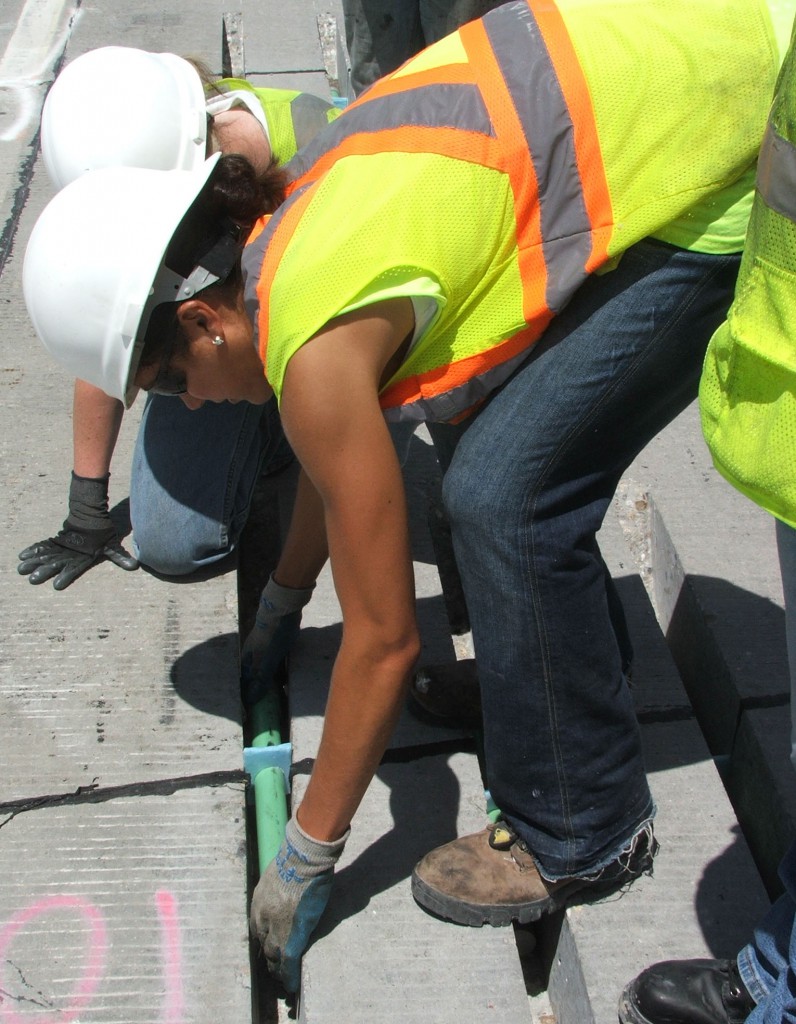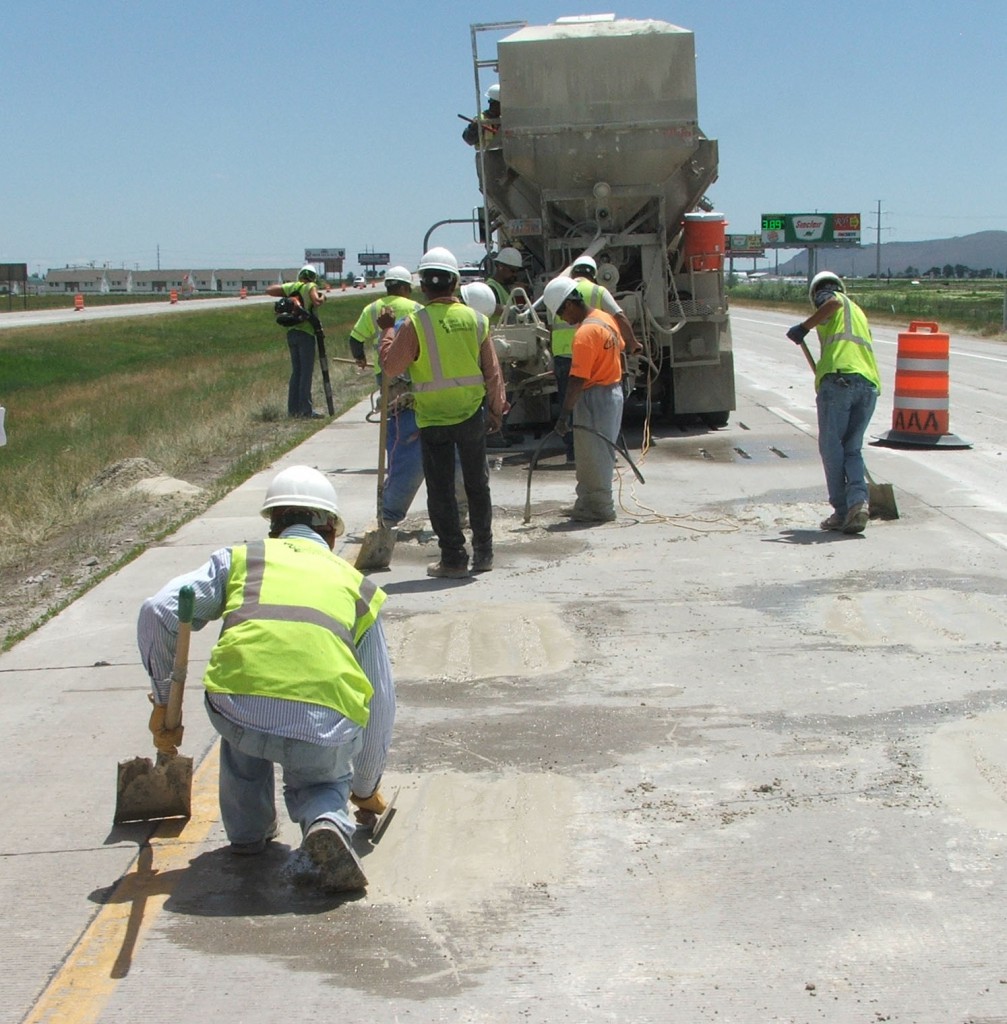Botox for Aging Concrete
July 7, 2011
Here’s a post from guest poster Vic Saunders, UDOT Public Involvement Manager from Region One.
Is Placing Bars On The Interstate The Solution To Aging Concrete?
As Utahns drive down our interstate highways, they have probably noticed some funny lines on the roadway in some places and some really bumpy sections of pavement in other places. While you might ask yourself, “What in the #&$%!@ was that,” what you are probably observing are the telltale signs of a concrete roadway rehabilitation effort underway. It’s something known in construction lingo as a “dowel-bar retrofit.”

Dowel Bars are made of steel, are 18 to 20 inches long, and weigh about five pounds. And they’re part of a process designed to extend the life of aging concrete roadways. In many areas of Utah, some concrete portions of the interstate highway system were laid down in the late 1960’s and early `70’s, and are now nearing their design life of 50 years. Over time, as vehicles travel on jointed concrete roadways, the weight of that vehicle passes from one concrete panel to the next.
As the vehicle crosses these joints its weight is placed on the edge of a panel, where it is least able to withstand the deflection force of the wheels. This force can cause cracks as minute layers of pavement shear off the edge of the panel over the years. And then, motorists feel a staccato “bump-bump-bump-bump” from panel to panel as they drive down the interstate.
On older concrete highways like portions of I-15 in northern and southern Utah, for example, UDOT maintenance crews have enlisted the aid of diamond grinding machines to remove this bumpiness in the past. While grinding provides relief for eight to ten years, the bumps eventually return due to the forces noted previously, and riding those sections of interstate highway becomes a test of endurance for motorists, rather than the smooth ride engineers envisioned with the roadway was constructed.
Enter the ingenious dowel bar solution.
To repair this problem, dowel bars are placed across the joints in the concrete to help transfer the load of passing vehicles from one panel to the next. The “retrofit” begins with the cutting of six slots (three in each wheel path) across all transverse joints or cracks, using ganged diamond saws that cut these slots in the concrete. Then the concrete between the saw cuts is removed with lightweight jack hammers (heavyweight jack hammers cause damage to the slots).
The dowel bars are then prepared and placed in the slots so that equal portions of the bar are in each adjoining concrete panel, which ensures that the weight of passing vehicles is distributed evenly. Finally, the slots are filled with a quick-drying cement-based grout. To keep the steel bars from rusting due to moisture that works its way into the roadway, they’re coated with an epoxy that prevents corrosion.
After the dowel bars are installed, crews fill any remaining joints or cracks in the slots with waterproof caulk. Once the grout and caulk have cured sufficiently, the final step in the retrofit involves diamond-grinding the entire road surface to remove any bumps created in the grouting process. It also removes any dips that may have been caused by panel displacement.

Smooth rides and smiles!
While this process is not a permanent fix, it extends the life of a section of highway another eight years or so until a complete reconstruction of that particular section is possible. Dowel bar retrofits outlast an asphalt overlay by at least ten years, and significantly improve ride quality. And if you’ve driven some portions of I-15 in Box Elder County recently, you would know that we’d all say “Hallelujah” to that!
While this process is not absolutely fool-proof, it has proven to be a relatively simple and consistent fix for many of the ride problems associated with older concrete highways in the state. But it can help save millions of dollars in precious highway maintenance funds over the nearly decade-long life of the repair, and that will definitely put a smile on the faces of a UDOT region director or district maintenance engineers charged with keep our state’s roadways in top condition.